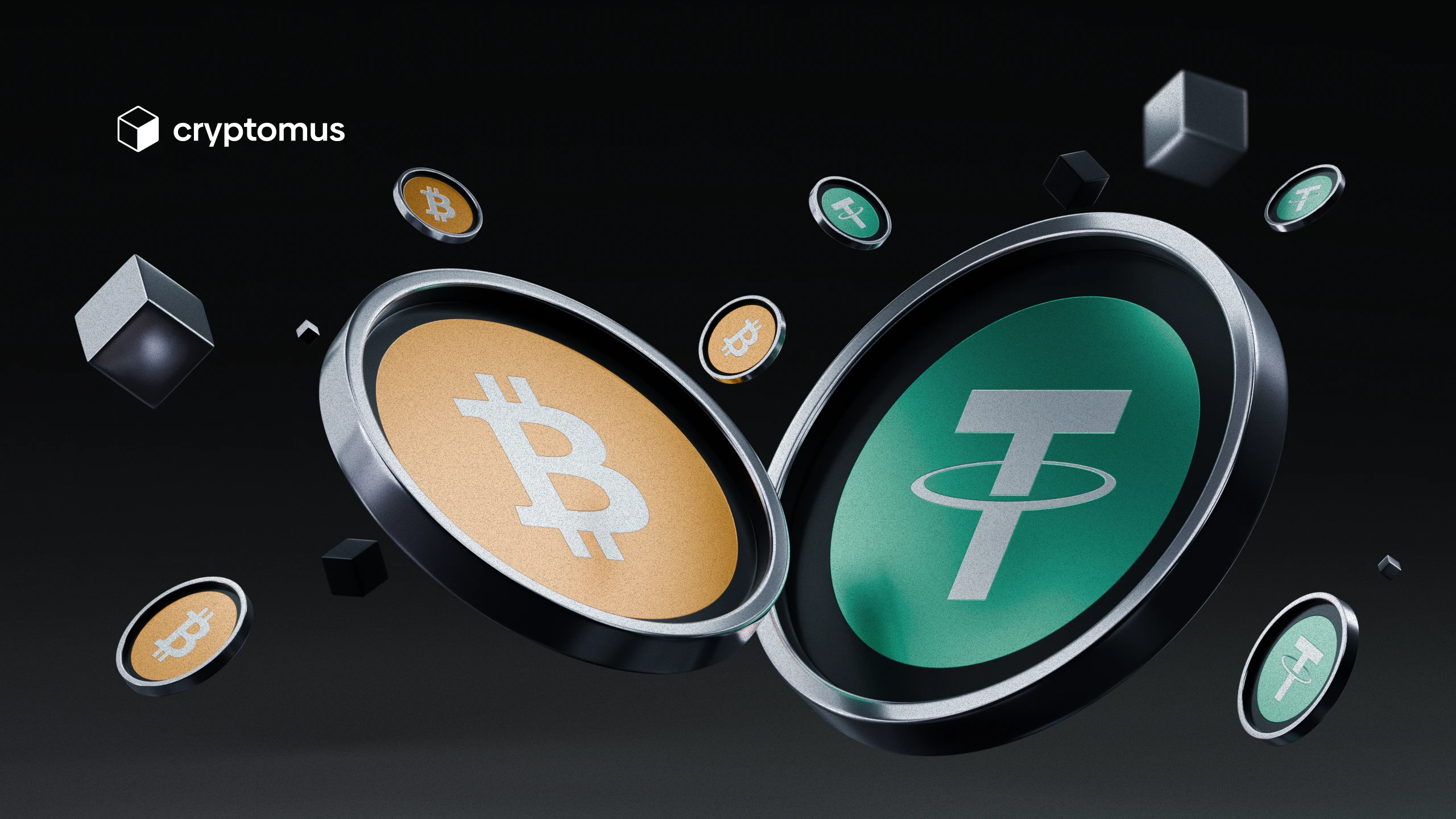
Bitcoin Vs. Stablecoins
Becoming a part of cryptospace, we encounter many terms whose meanings are not always clear at first glance. One such term is “stablecoin”. So, this article explores the difference between Bitcoin, as the pioneer of the crypto world, and stablecoins to finally solve any misunderstandings. Let's get started!
What Is Bitcoin?
Bitcoin is the first and most well-known cryptocurrency, created in 2009 by Satoshi Nakamoto. He thought of a way for money to only exist in digital form, so people don't have to rely on banks or governments. All transactions are recorded in a blockchain, which is like a large shared ledger that cannot be falsified or deleted.
Key features that made Bitcoin a revolutionary creation:
-
Limited supply: only 21 million Bitcoin tokens will ever be mined (20 million already in circulation), which makes it as rare as gold even among later created cryptocurrencies.
-
Decentralization: the network is made up of thousands of computers all over the world and doesn't have a single owner.
-
Security: cryptography keeps transactions safe and makes it almost impossible to fake them.
-
Direct transfers: you can send money to anyone, anywhere, without going through a bank.
-
Volatility: price swings of Bitcoin are the highest and most dramatic on the market.
-
Market nature: unlike stablecoins, Bitcoin is not pegged or connected to any real asset; its value is formed exclusively by demand and scarcity.
People use Bitcoin to invest (as "digital gold"), send money to other countries, and as a substitute for regular money in countries with unstable economies.
What Are Stablecoins?
Stablecoins are a special type of crypto whose price hardly changes. While Bitcoin can rise or fall in price by tens of percent in a single day, a stablecoin remains stable because it’s pegged to fiat currencies such as USD. However, they are still crypto, which means they share decentralized nature and cryptographic protection with Bitcoin and also are used for direct payments.
Stablecoins were created to combine the convenience of blockchain with the reliability of regular money. As each coin is backed by some real asset, if someone buys one stablecoin, they basically buy the right of ownership to the equivalent in the issuer's reserve. This means you can exchange your stablecoin back for money at any time.
Stablecoins became popular because they let you send money anywhere in the world quickly and cheaply, buy things, and play the role of store of value.

Key Differences Between Bitcoin and Stablecoins
For your convenience, we have compiled all the important characteristics that distinguish Bitcoin and stablecoins in one detailed table.
| Parameter | Bitcoin | Stablecoins | |
|---|---|---|---|
| Purpose | BitcoinDecentralized digital money, an alternative to fiat currency. | StablecoinsDigital equivalent of the dollar or other fiat currency. | |
| Price | BitcoinConstantly changing (high volatility). | StablecoinsStable, 1 unit of stablecoin = 1 dollar (or other asset). | |
| Collateralization | BitcoinNo collateralization; value is determined by demand and supply. | StablecoinsCollateralized by assets (dollars, gold, crypto). | |
| Issuance | BitcoinFixed limit—21 million coins. | StablecoinsFlexible: issued and burned according to demand. | |
| Governance | BitcoinCompletely decentralized, the network is managed by miners and nodes. | StablecoinsPartly centralized, issued by companies. | |
| Main use | BitcoinInvestment, store of value, inflation hedge. | StablecoinsPayments, transfers, medium of exchange. | |
| Technology behind | BitcoinOperates on its native network only. | StablecoinsCan operate on any network. | |
| Speed and fees | BitcoinSlower and more expensive, especially when the network is congested. | StablecoinsFaster and cheaper, especially on modern blockchains. | |
| Regulation | BitcoinMore often stays in the “gray” area or fully prohibited. | StablecoinsGovernments treat them better than Bitcoin and try to regulate the use of stablecoins, which could eventually lead to their legalization. |
Bitcoin Vs. Stablecoins As an Investment
In crypto investment, it should be noted that stablecoins and Bitcoin serve different purposes.
Stablecoins are the best choice if you want to keep money in crypto but don't want to risk exchange rate fluctuations. They don't see price swings, as they are pegged to the dollar (or another stable currency). So, they are a good choice to keep money safe or wait for the right time to buy other assets.
If you would like to make money on growth, you should consider investing in Bitcoin. Yes, it goes up and down in price, but overall, in the long term, it has shown an increasing tendency: having dropped, it nearly always comes back and makes new highs. That’s why investors regard Bitcoin as a way of growing their capital and protection against inflation.
So, neither of them is “better” than the other: stablecoins just serve different purposes than Bitcoin. The most you can do is decide what you want: stability or growth. Most investors use both types of coins. They keep some of their money in stablecoins as a precaution and some in Bitcoin for a long-term play.
So, both Bitcoin and stablecoins are cryptocurrencies, yet they were developed for different reasons. Whether or not to invest in one versus the other depends on your own individual financial goals and risk appetite.
Was this article helpful? What do you prefer to invest in? Why? Let's discuss it in the comments!
Rate the article








comments
0
You must be logged in to post a comment